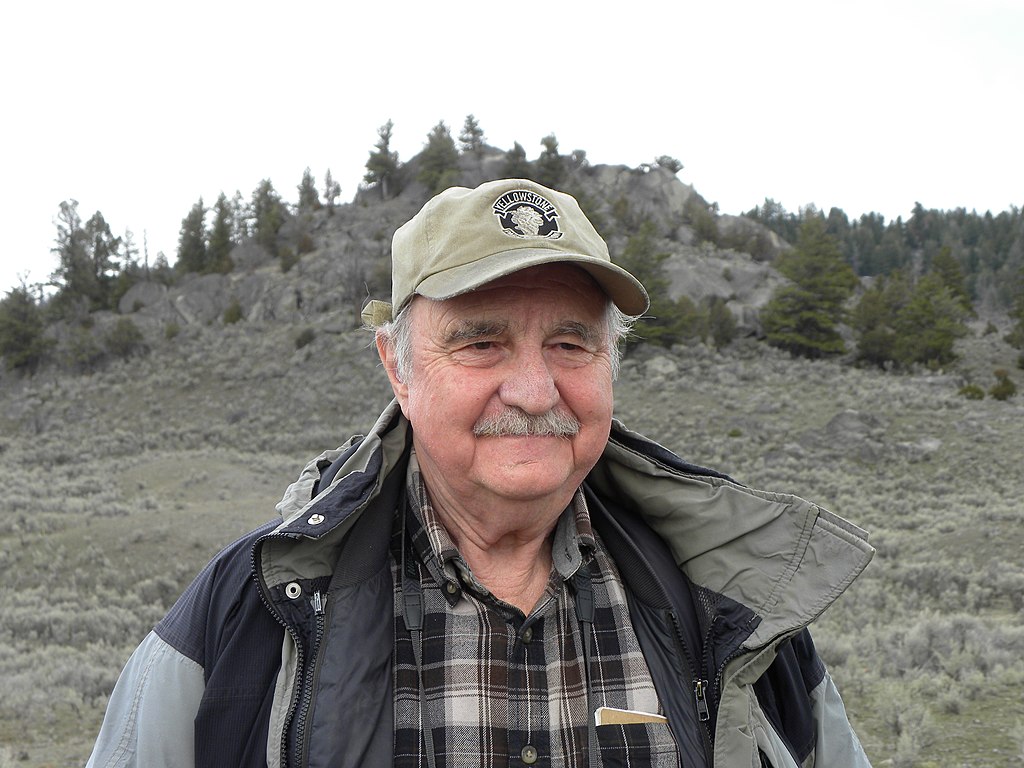 #Interviews
#Interviews
Henning Ulrich: The mechanisms behind receptors
Brazil-based German biochemist researches purine and kinin receptors in search of therapies for neurological diseases
 Studies conducted by Henning Ulrich, of USP, seek to understand how purine and kinin signaling can be therapeutic targets for reversing neurological pathologies such as Parkinson's, Alzheimer's, and Huntington's disease | Illustration: Shutterstock
Studies conducted by Henning Ulrich, of USP, seek to understand how purine and kinin signaling can be therapeutic targets for reversing neurological pathologies such as Parkinson's, Alzheimer's, and Huntington's disease | Illustration: Shutterstock
German biochemist Henning Ulrich, who has lived in Brazil for 25 years, has spent the past two decades researching the chemical and biological processes involved in transforming stem cells into specialized cells in adult individuals. A professor at the University of São Paulo’s Institute of Chemistry (IQ-USP), Ulrich is renowned for his contribution to studies on bradykinin, a hormone that helps relax blood vessels and lower blood pressure.
In his doctoral dissertation, defended in 1995 at the University of Hamburg, in Germany, the researcher suspected that bradykinin—which is found in the blood—could do more than lower blood pressure and trigger localized inflammation as the body’s natural response to injury.
When researching the proliferation mechanisms of neural tissue tumors, Ulrich discovered that bradykinin triggered certain signaling processes in these cells. He noticed that the effect was milder or nonexistent in other cells.
He then observed that when embryonic and neural stem cells are treated with bradykinin, neurons emerge that are sensitive to the neurotransmitter acetylcholine, a chemical messenger that carries information from one neuron to another. He also discovered that inhibiting the bradykinin receptor causes the neural stem cells to differentiate into glial cells, while stem cells predominantly give rise to neurons in the presence of bradykinin.
More recently, the biochemist has been dedicated to researching purine and kinin receptors as targets for therapeutic studies and intervention in neurological diseases. In this comprehensive study, Ulrich and other researchers investigate the importance of the neurogenesis process for regenerating neural tissues.
Prof. Ulrich recently demonstrated that the food coloring Brilliant Blue G, an inhibitor of the P2X7 purinergic receptor, regenerated dopaminergic neurons in an animal model of Parkinson’s disease. These findings suggest that the P2X7 receptor is a therapeutic target for Parkinson’s disease. Ulrich researches this and other purinergic receptors within the context of brain diseases (Parkinson’s, Alzheimer’s, Huntington’s, depression, and schizophrenia).
In this interview with Science Arena, the USP professor discusses the basic science behind purine and kinin receptors and the challenges inherent to researching signaling systems that could be therapeutic targets.
Science Arena – What are the challenges of studying purines and what is known about how they function as potential markers for neurological disease therapies?
Henning Ulrich – Purines are fundamental components of DNA and RNA. Purines are famous for their role in the body’s metabolism, such as adenosine triphosphate (ATP), which provides energy for cellular reactions.This is very well known. The novelty we are introducing is that ATP is released by cells through different processes, traditionally exocytosis, or through channels that release ATP, and cells in the process of dying that secrete ATP. ATP is an ancestral molecule, perhaps one of the first to promote communication between cells and signaling from the outside to the inside of the cell.
Knowledge has advanced with the identification of purinergic receptors activated by ATP and other nucleotides that introduce various signal transduction pathways.
In my laboratory, one of the focuses is the P2X7 receptor, which is expressed in microglial cells and activated astrocytes (cells that support and nourish neurons) in the central nervous system.
These cells are activated when the brain is injured, either by trauma or infection, or simply by translocation of an inflammatory process into the brain.
Basically, inhibiting this receptor is effective because it activates a multimolecular complex called the inflammasome, which triggers the inflammatory response. Neuronal cells, for example, die and release ATP, which activates even more P2X7 receptors and thus proinflammatory cytokines are released, which increase inflammation and cause neuronal death.
What have you observed in animal models and in vitro about the ability of these purine and kinin systems to modulate to determine the phenotype of neurons?
What we did in my laboratory was to first study the phenotype of neurons differentiated from neural stem cells. We used pluripotent stem cells from patients with Huntington’s—a rare neurological disease that severely debilitates people and manifests between the ages of 30 and 40, usually killing them before the age of 60. We were able to show that the PY2 receptor, one of the purinergic receptors, caused these cells to become GABAergic neurons. This is the type of neuron that dies while Huntington’s progresses. Thus, we have identified a possible therapeutic target for treating and preventing Huntington’s disease.
Do your studies suggest it may be possible to reverse, first in animals, diseases such as Parkinson’s, Alzheimer’s, Huntington’s, and other neurological conditions?
We are seeing this mainly in Parkinson’s, with inhibition of the P2X7 receptor. In animal models, we see a total reversal of the disease. The model is basically induced by injecting a toxin. We have been studying a second receptor, which is also involved in inflammation, called the P2Y6 receptor, and in this case, we are not really seeing a reversal, because it doesn’t reverse. However, if this compound is applied before or along with the toxin, it has partial protection. The animals are not totally cured, but they are very different from the untreated animals. This was clearly shown in my model. The rest of the studies that were carried out in my laboratory were basically with stem cell models. This is very well justified, for example, in Huntington’s disease, because it is genetic in origin. And we have already shown that Huntington’s disease features a defect in the receptor I previously mentioned, the P2Y2 receptor.
How should this knowledge be transferred from preclinical research to human studies?
For this step, we should ideally start with Parkinson’s disease, using a genetic model or a model generated by injecting alpha-synuclein protein. Then we should use other preclinical models, perhaps with monkeys. There are already clinical trials with the P2X7 receptor in humans, but they are not easy trials because you are not going to inject a drug into the brain.
The molecule must be modified so that it can enter the brain and have an effect. The problem is that you will also inhibit the physiological functions of this receptor. Although clinical trials have been carried out to treat neuroinflammation in multiple sclerosis and depression in humans with P2X7 receptor antagonists, there are still no promising results.
What we have seen so far is a trial by researcher Robert Naviaux, of the University of California, San Diego (UCSD), in the United States, who used suramin, a drug created to eliminate parasites, to treat autism, with good results. A single intravenous dose of suramin improved the main symptoms of autism in the five children who received the compound. However, suramin is not a selective antagonist.
It inhibits all purinergic receptors, as well as enzymes that break down ATP and possibly other proteins. In short, the trials we have so far, which are most promising with purinergic receptor antagonists, are not so much for treating neuronal or neurodegenerative diseases. There are three oral P2Y12 receptor inhibitors on the market, such as clopidogrel, prasugrel, and ticagrelor, which are antiplatelet drugs.
What was discovered, in tests with mice, when investigating the molecule tyrphostin’s role in preventing the worsening of Parkinson’s disease?
This study is being carried out by the professor Luiz Britto, of the Institute of Biomedical Sciences (ICB) at USP. I participated in the study as a collaborator. In mice, there was around a 60% reduction in dopaminergic neuron death with inhibition of TRPM2—one of the calcium entry channels for brain cells.
This was achieved using a substance derived from the AG-490 molecule, tyrphostin. This compound selectively inhibits the TRPM2 channel. The procedure adopted is quite similar to what we are doing, for example, with the P2X7 and P2Y6 receptor antagonists. Treatment with AG-490 basically results in a neuroprotective effect in the Parkinson’s model caused by 6-hydroxydopamine. In my opinion, they are parallel routes, and perhaps it would be interesting to merge them and see what happens.
Are there any concrete examples that neural stem cells have the potential to generate new treatments for neurological diseases?
Why do we need to know about neurogenesis? Because, clearly, endogenous neurogenesis is impaired in neurodegenerative diseases such as Parkinson’s disease. And many stem cell injection treatments have not been very promising. The cells can die or fail to integrate into the neuronal network, forming necrotic foci and nothing works.
So, the idea is to induce neurogenesis and endogenous neuroprotection—in which you say to the undifferentiated or progenitor cells: “Go form new neurons” or “go find ways to secrete neurotrophic or neuroprotective compounds that prevent these neurons from dying.”
Here’s a classic example, which is to install a micro-pump that continuously infuses neutrophic substances into the damaged region of the brain. It is also worth noting that there are more promising studies with mesenchymal stem cells, which have been preprogrammed to release compounds to generate a microenvironment that promotes the recovery or regeneration of lost or damaged neurons.
*
This article may be republished online under the CC-BY-NC-ND Creative Commons license.
The text must not be edited and the author(s) and source (Science Arena) must be credited.


